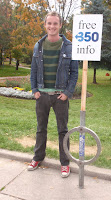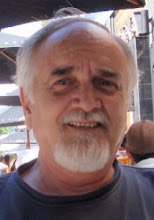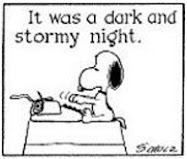(a-and Starvation, Extinction, Annihilation, &etc)
Up, Down, Appendices, Postscript.
So then ... a before and after shot. My plan is to go out onto the sidewalks of my neighbourhood and give away 350 buttons and flyers. It feels lame. I tried to hook up with some already established event but there seemed to be none. 350.org works harder at counting media numbers than actually facilitating real connections. Oh well. Have to do something though eh? I sure hope someone shows up to keep me company.
|

 Pride of place goes to Hannah McKinnon since I was criticizing her recently for being numby (here). A hasty judgement perhaps as her article yesterday on rabble.ca says it pretty well. (Maybe this rabble thing will take up some of the slack from the demise of the now defunct Globe and Mail? Do you think it might?)
Pride of place goes to Hannah McKinnon since I was criticizing her recently for being numby (here). A hasty judgement perhaps as her article yesterday on rabble.ca says it pretty well. (Maybe this rabble thing will take up some of the slack from the demise of the now defunct Globe and Mail? Do you think it might?)Ah, she turns out to be associated with Lauryn Drainie (who has figured here before). They were both involved in the Canadian Youth Delegation to COP 14 in Poznan in the winter of 2008, good on 'em all!
 And if you get your way Dr. Strangelove, and os ricos e poderosos are all headed for the long-term survival bunker - you can lock me out if you like (and I am sure you will), but let these two in OK? I would if I were you.
And if you get your way Dr. Strangelove, and os ricos e poderosos are all headed for the long-term survival bunker - you can lock me out if you like (and I am sure you will), but let these two in OK? I would if I were you.A fungus (Stem Rust aka Puccinia graminis aka Ug99) is going to spoil all the wheat in the world? The end is near?





 A-and here is some good news on the Ug99 front; always striving for balance y'know, yessirie Bob!
A-and here is some good news on the Ug99 front; always striving for balance y'know, yessirie Bob!But ... on the other-other hand ... if you follow the red dots on the map you will see that Ug99 is fast approaching a harmonic convergence in Syria. Which convergence would put the farmers in a double twist. But how much sympathy do you have for men with several wives (to which I make no objection at all, nice work if you can get it I guess provided they are not cut) and double digits of offspring? Population looks to me like the root (if you will permit this metaphor) of the problem all round.
Where's your balance now, asshole!
 I feel like I have to say more about 350.org. Maybe later ... and this song? Well, maybe you can see how it relates and maybe you can't. Just that it has been in my head all week.
I feel like I have to say more about 350.org. Maybe later ... and this song? Well, maybe you can see how it relates and maybe you can't. Just that it has been in my head all week.The Cliffs Of Baccalieu
We were bound home in October
From the shores of Labrador
Trying to race a bold nordeaster and snow too
When the wind swept down upon us
Making day as dark as night
 Just before we made the land at Baccalieu.
Just before we made the land at Baccalieu.Well we tried to clear the island
As we brought her further south
But the wind from out the nordeast stronger blew
 And our lookout soon he shouted
And our lookout soon he shoutedFor there right dead ahead
Through the snow squalls loomed the cliffs of Baccalieu.
And it was hard down with the tiller
 As we struggled with the sheets
As we struggled with the sheetsTrying our best to haul them in a foot or two
With our deck so sharply tilted
We could scarcely keep our feet
As we struggled on the rocks at Baccalieu.
For the combers beat her under
And I thought she'd never rise
And her main boom was bending nigh in two
And all hands come to windward
As they stared with straining eyes
Down to leeward at the cliffs of Baccalieu.
For to leeward stood the island
And to windward was the gale
 And the blinding sleet'd cut you through and through.
And the blinding sleet'd cut you through and through.With her lee rail three foot under
Yes and two hands at the wheel
We hauled her from the cliffs of Baccalieu.
Yes we hauled her to the southward
And her canvas stood the strain
And the blinding snow squalls from the nordeast blew
But our hearts were beatin' gladly
When no longer could we view
Down to leeward at the cliffs of Baccalieu.
'Baccalieu' comes from the Portuguese 'bacalhau' meaning cod.

Here's Ryan's Fancy and Louise Morrissey and John White singin' it.
The best I have heard, and where I learned it, was from Anita Best. It was on an album by Bristol's Hope, 'Lately Come Over' with Sandy Morris, but I can't find her version anywhere available ... I used to have it but I lost it - damned computers!
Ah, she has graciously sent me another copy and permission to post it up somewhere. Here ya' go, here's the real stuff: Anita Best, The Cliffs Of Baccalieu.
I knew some of the people who used to keep lighthouses like the one in the picture.
'Croucher,' just imagine a place with such a name.
Postscript:

 It was a BUST. My son showed up for a short time, bless his heart. But on Queen Street in Toronto nobody knows, and vanishingly few want to know, so eventually it is just too much to face alone and I slide on home with my tail between my legs. Bad idea I guess, a mistake.
It was a BUST. My son showed up for a short time, bless his heart. But on Queen Street in Toronto nobody knows, and vanishingly few want to know, so eventually it is just too much to face alone and I slide on home with my tail between my legs. Bad idea I guess, a mistake.Maybe the best part was when Ralph Benmergui (of the Green Party of Canada) rushed past and did not have time to even say 'hello.' How long does it take to say hello?
Palavra do dia: 'água de salsicha' / good for nothing. Salsicha is 'sausage' so literally it is 'sausage water' but I don't believe the sexual double entendre is operative here. That's to say I don't think 'água de salsicha' is a synonym for 'porra.'
So, I go off sniffing drainpipes ... and trying to contemplate the lessons of humility, or, I dunno, some new Buddhist lesson or other.
 Kookaburra sits in the old gum tree;
Kookaburra sits in the old gum tree;Merry merry king of the bush is he.
Laugh Kookaburra, laugh,
Oh how gay your life must be.
Kookaburra sits in the old gum tree,
Eating all the gumdrops he can see.
Stop Kookaburra, stop,
Leave some gumdrops there for me.
Kookaburra sits in the old gum tree,
Counting all the monkeys he can see.
No Kookaburra, no,
That's no monkey, that is me.
(and that's about what I think of Bill McKibben and 'his' 350.org)
I've been wrong before and I'll be there again. I don't have any answers my friend just this pile of old questions my memory left me here. (Neil Young, who also likes to have it both ways :-)
Happy Thanksgiving.
Ite missa est, be well gentle reader.
Appendices:
1. The perfect Thanksgiving recipe: Turkey, pie and climate solutions!, Hannah McKinnon, October 9 2010.
2. Virulent stem rust could wipe out world’s wheat, Debra Black, October 5 2010.
3. First Ug99 tolerant wheat variety released in Nepal, Laura Yates, September 15 2010.
4. Searching for Crumbs in Syria’s Breadbasket, Robert Worth & Hwaida Saad, October 13 2010.
The perfect Thanksgiving recipe: Turkey, pie and climate solutions!, Hannah McKinnon, October 9 2010.
It is a holiday weekend here in Canada, a time for celebrating things that are important to us. Across the country, in every province and territory, Canadians are proving this weekend that solving the climate crisis is something that is very important to us.
On 10/10/10 thousands of Canadians will join in over 200 events across the country in a global work party to help solve the climate crisis. This campaign -- driven by the fantastic organizers at 350.org is setting records. Last year CNN called their Day of Action, the "most widespread day of political action in the planets history," with over 5,000 events across the globe on October 24th (including over 5,000 people gather in Parliament Hill in Canada for Fill the Hill). This year is even bigger. Over 7,000 actions in 188 countries are taking place this Sunday, proving that global concern and our collective drive to find solutions is only growing.
In Canada exciting and creative events are popping up from coast to coast to coast. From 10 year old Owen's plan to clean up the planet in British Columbia, to committing to make Saskatoon "garlic neutral," to taking homes completely off of the grid with solar power, everyone is finding their own way to send one very important message to our politicians. We are getting to work, now it is your turn!
Speaking of politicians -- Liberal MP Maria Minna has committed to putting solar panels on her house within 10 months, NDP MP Bruce Hyer has called on Canadians and the Prime Minister to get to work passing the climate change accountability act on the eve of 10/10/10, and the Green Party has the global work party front and centre on their website. Globally, the President of the Maldives spent yesterday harnessed to his roof installing solar panels, and President Obama has promised to put solar panels back on the White House!
Where then is our Prime Minister? Instead of getting to work doing Canada's part to solve the climate crisis, Prime Minister Harper is giving away over $1.5 billion dollars in tax breaks each year to dirty fossil fuels.
Canadians don't want our government to forfeit billions of dollars to give oil and gas companies and easy ride. We want our government to stop being reckless when it comes to climate change and to get to work!
It may be too late to turn parliament solar by Sunday, but it is not to late to stop giving a free tax ride to the dirtiest (and richest!) companies in the country.
For the rest of us, on 10/10/10 we will make history -- again. We will not let inaction stand in the way of action! This Thanksgiving we will be thankful for our planet and the millions of people around the world working to save it.
About fossil fuel subsidies and clean energy policy in Canada
The Canadian government spends an estimated 2 billion dollars a year in subsidies to the fossil fuel industry. Meanwhile the only major federal programs supporting renewable energy and home retrofits have both run out of money.
About 350.org
Founded by American environmentalist Bill McKibben, 350.org is an international campaign that works to build a global climate movement. On October 24, 2009 they organized what CNN called the "most widespread day of political action in the planet's history." 350.org is named after the goal of reducing the concentration of carbon dioxide in our atmosphere from its current level of 390 parts per million to below 350 ppm, the safe upper limit according to the latest science.
Virulent stem rust could wipe out world’s wheat, Debra Black, October 5 2010.
A form of stem rust, known as Ug99, is threatening the world’s wheat crop – with wheat in Uganda, Kenya, Ethiopia, Iran and South Africa already affected.
Scientists fear the virulent strain is on the move and may show up soon in India and Pakistan. Once there it could be blown by the winds to North America, effecting crops in Canada and the United States, scientists suggest.
While wheat farmers here and in the United States have some options when it comes to planting wheat that is resistant to this form of rust, scientists are also trying to genetically breed new lines that are stronger and even more resistant, said Tom Fetch, stem-rust specialist at Agriculture Canada in an interview with the Star.
Ultimately, the long-term effects could be more devastating in the developing world where, unlike here, many farmers can’t afford to use fungicides to battle the rust, Fetch said.
According to Martin Carson, research leader at the USDA Cereal Disease Laboratory at the University of Minnesota, 80 per cent of the world’s wheat is susceptible to Ug99, which was found first in Uganda.
Ug99 is a strain of stem rust that burrows into the tissues of wheat and barley, damaging or killing the plant. The fungus saps nutrition from the host plant, he said, absorbing water and putting it under stress. It ends up all shrivelled and shrunken.
Its spread in a field can be rapid. The spores of the fungus germinate and penetrate a plant; in 10 to 14 days, a pustule erupts through the plant and it contains thousands and thousands of spores which can infect more wheat, Carson explained.
Since its discovery in Uganda it has travelled to neighboring countries, wiping out wheat crops, Carson said in an interview with the Star. Now scientists are in “a race against time” to develop new strains that are resistant to the pathogen, he said.
Scientists working at the Durable Rust Resistance in Wheat Project at Cornell University, funded by the Bill and Melinda Gates Foundation, are trying to do just that. But it will likely take between 8 to 10 years to develop a new line and have it ready for planting.
Meanwhile, given wind patterns and where the pathogen has turned up, wheat crops in India and Pakistan may be next hit. But conditions have to be just right for the pathogen to take hold, Carson said.
“It’s a disease where you have to have favourable environmental conditions as well,” he said. “It requires either rainfall or heavy dews for the fungus to penetrate the wheat.” Drought conditions and very high or low temperatures “wouldn’t be particularly favourable.”
If there is a worldwide outbreak affecting the world’s wheat production, it could have some very real “geopolitical repercussions,” including spiking prices for wheat and its products such as bread, Carson said.
He points to 1916 when there was a major outbreak of a kind of stem rust that forced wheat prices to spike at $3 U.S. a bushel then or an equivalent of $60 U.S. a bushel today. It made it very difficult to feed people in Europe after World War 1.
More recently in 2008, when grain prices hit a peak there were food riots throughout North Africa and the Middle East, he said. “In a lot of the world, wheat may be 40 per cent of the caloric daily intake. When you’re living on $2 a day and most of the money goes on food, it doesn’t take much of a rise to spark a riot.
“I think if a lot of people realized how precarious our food supply really is, they might be a little more concerned about some of this stuff.”
With the rust poised to hit India and Pakistan, scientists fear that it won’t be long before it strikes in China. Once there it could blow over to North America on hurricane winds, Fetch explained, and begin to devastate wheat grown in the northern plains of both the U.S. and Canada.
Another more unpredictable fear for scientists is that Ug99 will be brought over to North America on the clothes of someone flying on an airplane from one of the blight-affected regions. The spores are very light and could easily attach themselves to clothing, said Fetch.
The worst thing about this method of transport, he said, is there is no way to predict when or where it might happen.
First Ug99 tolerant wheat variety released in Nepal, Laura Yates, September 15 2010.
On 02 September 2010, Nepal gave the go-ahead to release a new wheat variety with resistance to Ug99. BL3063—given the common name “Vijay” meaning Victory—has CIMMYT parental lines in its pedigree, good resistance against variants of Ug99, and impressive agronomic performance under both normal and late sown conditions in the Terai region of Nepal.
“NL 3063 yielded 7% higher than the current most popular variety, Gautam, in three years of multi-location testing in Nepal,” said Madan Raj Bhatta, wheat breeder at Nepal Agricultural Research Council (NARC), adding that it also performed better than other varieties in on-farm testing.
Because of its notable performance under late-sown conditions, BL 3063 is believed to have terminal heat tolerance. It also performs exceedingly well under zero tillage, said Janmejai Tripathi, wheat agronomist in Bhairahwa, Nepal. Additionally, BL 3063 has large, bold, amber colored grains, high protein content (12.5%), and good quality for baking industries. Recently, Yue Jin of the United States Department of Agriculture reported that this variety possesses adult plant resistance for Ug99.
In Nepal, under the guidance of the National Wheat Research Program (NWRP) and CIMMYT, BL 3063 was under demonstration and multiplication on 22 hectares of farmers’ fields. This resulted in 50 tons of improved seed for the coming year, according to Arun Joshi, CIMMYT wheat breeder. This important step toward mitigating the threat of Ug99 was made possible in part by a USAID seed multiplication famine fund program in which six countries are currently multiplying wheat varieties resistant to Ug99. The NWRP of the NARC and CIMMYT-Nepal are working together under this program to identify suitable Ug99-resistant varieties, seed production, and seed delivery.
Searching for Crumbs in Syria’s Breadbasket, Robert Worth & Hwaida Saad, October 13 2010.
Al Raqqah, Syria — The farmlands spreading north and east of this Euphrates River town were once the breadbasket of the region, a vast expanse of golden wheat fields and bucolic sheep herds.
Now, after four consecutive years of drought, this heartland of the Fertile Crescent — including much of neighboring Iraq — appears to be turning barren, climate scientists say. Ancient irrigation systems have collapsed, underground water sources have run dry and hundreds of villages have been abandoned as farmlands turn to cracked desert and grazing animals die off. Sandstorms have become far more common, and vast tent cities of dispossessed farmers and their families have risen up around the larger towns and cities of Syria and Iraq.
“I had 400 acres of wheat, and now it’s all desert,” said Ahmed Abdullah, 48, a farmer who is living in a ragged burlap and plastic tent here with his wife and 12 children alongside many other migrants. “We were forced to flee. Now we are at less than zero — no money, no job, no hope.”
The collapse of farmlands here — which is as much a matter of human mismanagement as of drought — has become a dire economic challenge and a rising security concern for the Syrian and Iraqi governments, which are growing far more dependent on other countries for food and water. Syria, which once prided itself on its self-sufficiency and even exported wheat, is now quietly importing it in ever larger amounts. The country’s total water resources dropped by half between 2002 and 2008, partly through waste and overuse, scientists and water engineers say.
For Syria, which is running out of oil reserves and struggling to draw foreign investment, the farming crisis is an added vulnerability in part because it is taking place in the area where its restive Kurdish minority is centered. Iraq, devastated by war, is now facing a water crisis in both the north and the south that may be unprecedented in its history. Both countries have complained about reduced flow on the Euphrates, thanks to massive upriver dam projects in Turkey that are likely to generate more tension as the water crisis worsens.
The four-year drought in Syria has pushed two million to three million people into extreme poverty, according to a survey completed here this month by the United Nations special rapporteur on the right to food, Olivier De Schutter. Herders in the country’s northeast have lost 85 percent of their livestock, and at least 1.3 million people have been affected, he reported.
An estimated 50,000 more families have migrated from rural areas this year, on top of the hundreds of thousands of people who fled in earlier years, Mr. De Schutter said. Syria, with a fast-growing population, has already strained to accommodate more than a million Iraqi refugees in the years since the 2003 invasion.
“It is ironic: this region is the origin of wheat and barley, and now it is among the biggest importers of these products,” said Rami Zurayk, a professor of agricultural and food science at the American University in Beirut who is writing a book on the farming crisis.
The drought has become a delicate subject for the Syrian government, which does not give foreign journalists official permission to write about it or grant access to officials in the Agriculture Ministry. On the road running south from Damascus, displaced farmers and herders can be seen living in tents, but the entrances are closely watched by Syrian security agents, who do not allow journalists in.
Droughts have always taken place here, but “the regional climate is changing in ways that are clearly observable,” said Jeannie Sowers, a professor at the University of New Hampshire who has written on Middle East climate issues. “Whether you call it human-induced climate change or not, much of the region is getting hotter and dryer, combined with more intense, erratic rainfall and flooding in some areas. You will have people migrating as a result, and governments are ill prepared.”
The Syrian government has begun to acknowledge the scale of the problem and has developed a national drought plan, though it has not yet been put in place, analysts say. Poor planning helped create the problem in the first place: Syria spent $15 billion on misguided irrigation projects between 1988 and 2000 with little result, said Elie Elhadj, a Syrian-born author who wrote his Ph.D. dissertation on the topic. Syria continues to grow cotton and wheat in areas that lack sufficient water — making them more vulnerable to drought — because the government views the ability to produce those crops as part of its identity and a bulwark against foreign dependence, analysts say.
Illegal water drills can be seen across Syria and Iraq, and underground water tables are dropping at a rate that is “really frightening,” said Mr. De Schutter, the United Nations expert. There are no reliable nationwide statistics, and some analysts and Western diplomats say they believe the Syrian government is not measuring them.
As in other countries across the Arab world, corruption and failed administration are often to blame. “A lot of powerful people don’t abide by the regulations, and nobody can tame them,” said Nabil Sukkar, a Damascus-based economic analyst.
In Ar Raqqah, many displaced farmers talk about wells running dry, and turning polluted.
“My uncle’s well used to be 70 meters deep, now it’s 130 meters and now the water became salty, so we closed it down,” said Khalaf Ayed Tajim, a stocky sheep herder and farmer who heads a local collective for displaced northerners. He left his native village 60 miles from here when half of his herd died off and his fields dried up, and now lives in a concrete bunker with his 17 children, two wives, and his mother.
In Iraq, 100,000 people had been displaced as of a year ago, according to a United Nations report. More than 70 percent of the ancient underground aqueducts have dried up and been abandoned in the past five years, the report said. Since then, the situation has only worsened.
“We saw whole villages buried in sand,” said Zaid al-Ali, an Iraqi-born lecturer at the Institut d’Études Politiques in Paris who returned in August from a survey of water and farm conditions in Kirkuk and Salahuddin Provinces, in northern Iraq. “Their situation is desperate.”
Southern Iraq has seen similar farming collapses, with reduced river flow from the Euphrates and the drying up of the once vast southern marshes.
Syrian officials say they expect to get help from water-rich Turkey, which has recently become a close ally after years of frosty relations. But it may be too late to save the abandoned villages of northern Syria and Iraq.
“At first, the migrations were temporary, but after three or four years, these people will not come back,” said Abdullah Yahia bin Tahir, the United Nations Food and Agriculture representative in Damascus.
“Back in the village, our houses are covered in dust; it’s as if they’d been destroyed,” said Mr. Tajim, the farmer who moved here two years ago. “We would love to go back, but how? There is no water, no electricity, nothing.”






No comments:
Post a Comment